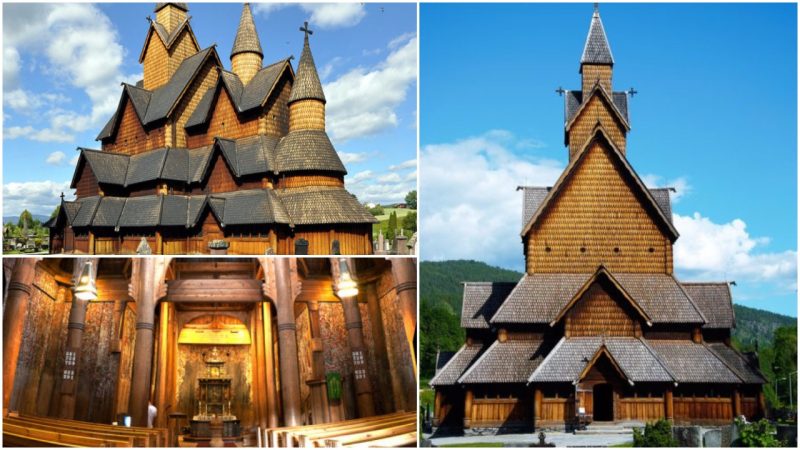Norway is one of the northernmost and most beautiful countries in the world, renowned for the fjords, its mountains, and the midnight sun. But in addition to these natural beauties, Norway is also home to the biggest stave church in the world, the Heddal stave church.
Located in Nottoden, Norway, Heddal was built at the beginning of the 13th century. Architecturally, it is a triple nave stave church and has been restored several times through the centuries. The first restoration took place between 1849 and 1851 as an effort to save the crumbling church from ruin. However, a hundred years later, a second effort was necessary to undo the damage done by the clumsy first restoration. This last repair is in most part responsible for the interior today, although it was also heavily influenced by the period of the Lutheran Reformation in 1536-1537.
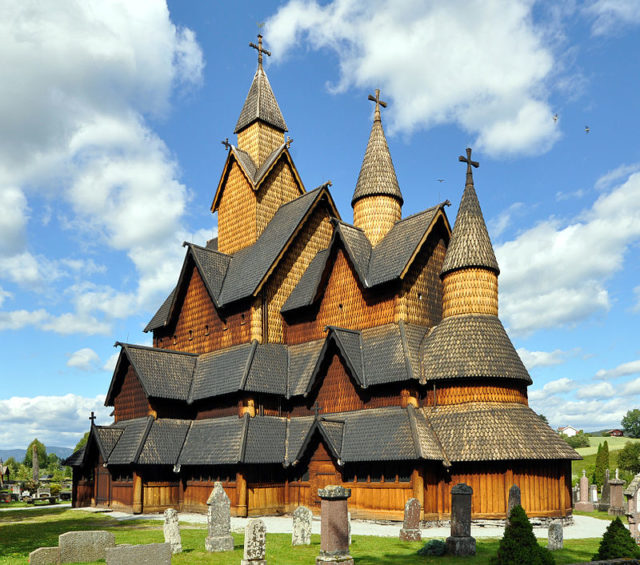
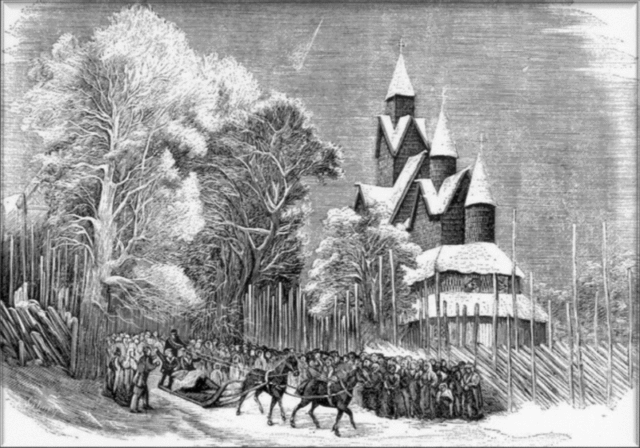
Stave churches were once widespread across northwestern Europe, but Norway is almost the only country that has preserved these buildings into the modern age. There are only two surviving medieval stave churches that are not on Norwegian soil: one in Hedared, Sweden, and one in Karpacz, Poland. The latter was originally Norwegian but was relocated in 1842.
Stave churches are named for the Old Norse word stafr, now stav in modern Norwegian. The stafr represents a type of timber framing, or more accurately, the load-bearing posts made from ore-pine. There are two other similar types of churches named for their structural elements: the post church and the palisade church. However, these are often also called stave churches.
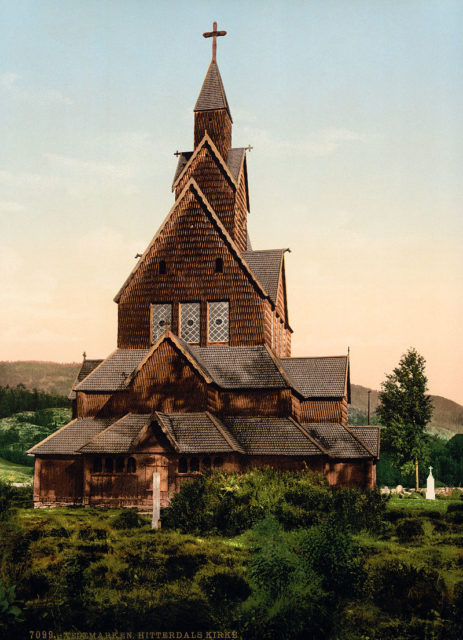
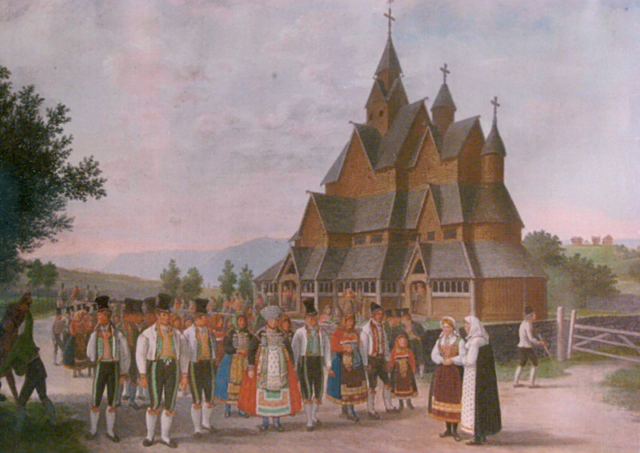
In addition to its architectural significance, the Heddal church’s construction is surrounded by legend. According to this legend, the church was built in only three days. The story says that five farmers from Heddal decided that their municipality needed a church and forged a plan to build it. An unknown stranger encountered by Red, one of the farmers, was hired to build the church.
However, the stranger set three conditions, of which at least one had to be fulfilled before he finished construction: he asked the farmer to fetch the sun and the moon from the sky, forfeit his lifeblood or guess his name. If none of the terms were met, the stranger would kill the farmer. Red thought he would have plenty of time to fulfill the third condition, so he accepted the stranger’s terms.
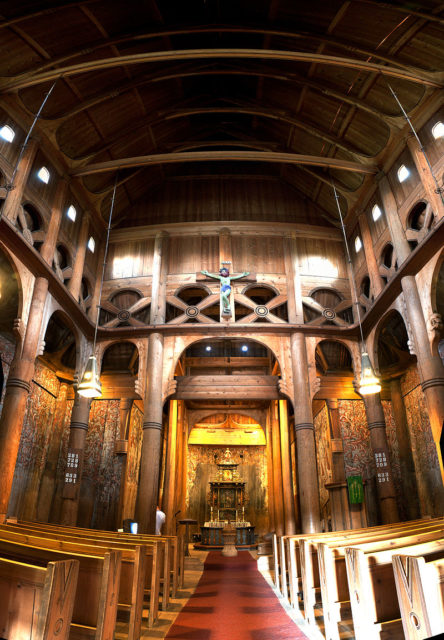
After the deal had been agreed, the construction started. The timber and the stone were delivered on the first day. On the second day, the frame of the church was finished. On the third day, Red was nervously walking in the fields around Heddal, trying to figure out the stranger’s name and save his life. Suddenly, he heard a song coming from a nearby rock. As he walked closer, he heard the words of the song, sung by a beautiful voice:
- “Hush-hush little child,
- tomorrow your father Finn will bring you the moon and the sun.
- or he will bring you a Christian heart,
- so pretty toys for my little child to play a part”
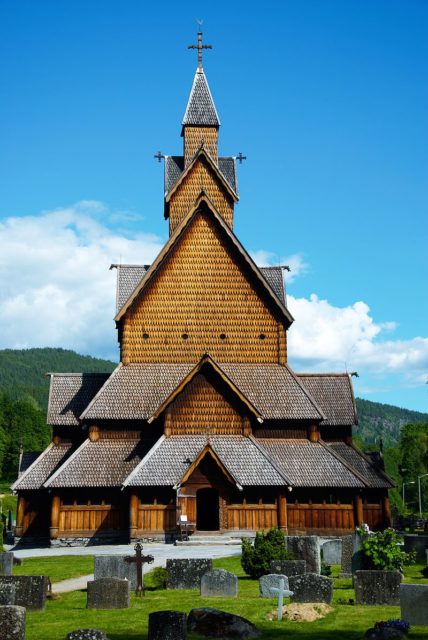
Red then realized the stranger was actually a troll that lived in the rocks, and his name was Finn. He went back to Heddal, only to find the church construction finished. With five doors and 64 small roofs, the church was built without a single nail being used. As Finn and Red walked inside the church together, where Red indicated one of the pillars and said, “This pillar, my good Finn, is not straight.”
After hearing his name, the furious troll punched the pillar and ran up a hill. He then threw three rocks towards the church, but none hit the building. Locals say that the rocks missed the church because the bell was ringing at the time.
